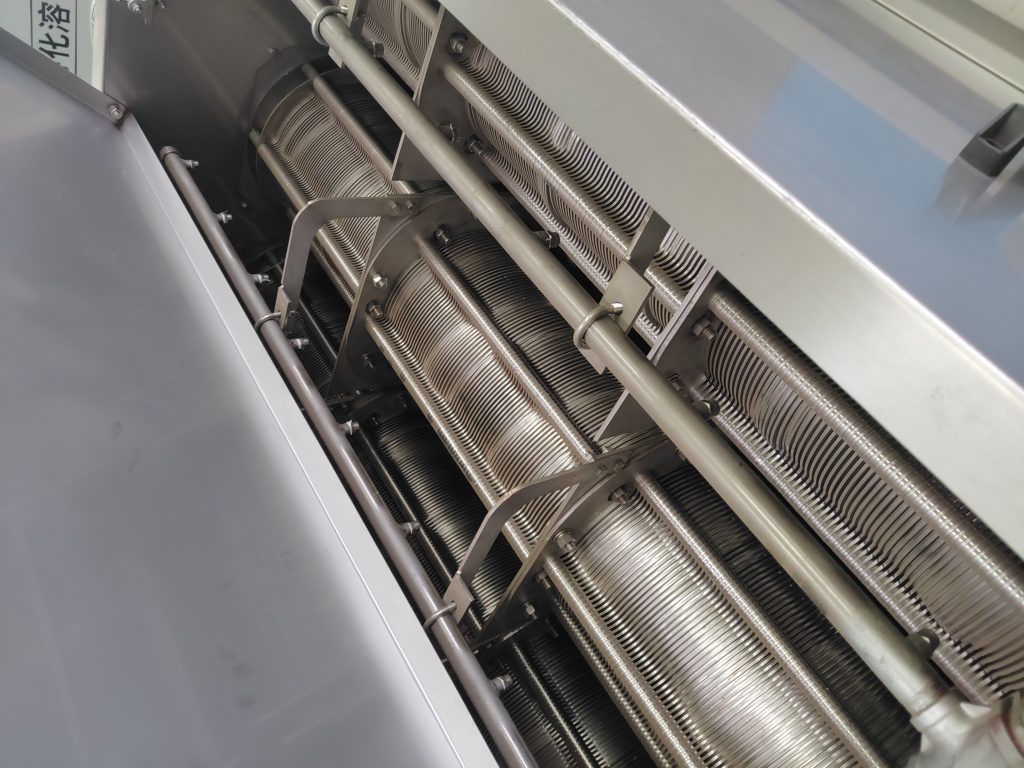Industrial dewatering methods: which one is right for you?
In the simplest terms, dewatering is the removal of liquids from a sludge slurry. The process involves using one of three dewatering techniques. The three techniques are plate and frame filter press, centrifuge and belt press. These techniques are used in wastewater treatment plants, power plants, refineries, and drinking water facilities to reduce the volume of sludge and more cost effective transportation.
Depending on the conditions, one of these three dewatering methods can be used:

- Plate and Frame Filter Press
Plate and frame filter presses use recessed-chamber filter plates to separate the liquids from the solids. Two plates join together to form a chamber to pressurize the slurry and squeeze the filtrate out through the filter cloth lining in the chambers. Filter cake is collected on the surface of the filter plate cloths and dropped onto a horizontal conveyor. Filter presses are highly effective and produce filter cake that are between 40% and 70% solids by weight. It is also beneficial because it produces the highest content of solid material which makes for cost-effective transportation and disposal.
Some benefits of using a plate and frame filter press is that no special licensing is required to operate the machine, and they produce stackable, cake-like solids that are more cost effective to transport.
The plate and frame filter press are most useful for the following applications:
Biological sludge
API Separator Sludge
For a more in depth look at plate and frame filter presses, check out this article.
- Centrifuge
A centrifuge is a device, which employs a high rotational speed to separate components of different densities. The principle of a centrifuge is based via buoyancy. A component with a higher density would fall to the bottom of a mixture, while the less dense component would be suspended above it. Centrifuges typically produce between 25% and 35% solids by weight.
The main benefit of the centrifuge is in the speed of the process. This process is generally reserved for situations where oil recovery is the main priority and the quality of residual solids is less of a concern.
Centrifuge is most useful for the following applications:
Heavy Oil Sludge Dewatering
Municipal Wastewater Treatment Sludge Dewatering
For a more in depth look at centrifuges, check out this article.
- Belt Filter Press
The belt press is most often used when high-moisture content is acceptable in the filter cake. It typically produces between 18% and 25% solids by weight. Since this is a continual action, it is effective on high-volume waste streams where a large production of low-quality filter cake is acceptable. This process is commonly used in municipal wastewater treatment plants.
The belt press is most useful for the following applications:
Paper mill sludge
River silt
Municipal Wastewater Treatment Sludges
For a more in depth look at belt filter presses, check out this article.

- Multi-disc Spiral Sludge Dehydrator
The machine is a dewatering unit that offers a superior alternative to other dewatering technologies, such as the centrifuge and belt press.
It offers clog-free functionality, low energy consumption, simple operation & maintenance, and is suitable for a wide range of applications.
Applications
The Multi-disc Spiral Sludge Dehydrator is a ‘moving disc screw press’ shown to be very suitable for the dewatering of dilute greasy and oily sludges at a rate of up to 60lpm for a sludge up to 30,000mg/l (3.0%) total solids.
A proportional increase to the hydraulic capacity of the unit can be expected with lower feed stream concentrations.
Multi-disc Spiral Sludge Dehydrator has been successfully deployed in many situations; some examples are:
• Primary and secondary sludge dewatering from ice cream manufacturing
• Primary sludge dewatering in corn and mixed vegetable processing
• Secondary sludge in leachate treatment from composting facility
• Secondary sludge in sewage treatment plant
• Secondary sludge in milk processing plant
• Secondary Sludge in chicken abattoir
Which is Right for You?
Dewatering is used in every town with a wastewater treatment plant, power plant, refinery or drinking water facility. Selecting the right process will depend on many factors. Knowing the different materials and what your project necessitates are will help determine what your needs are.
